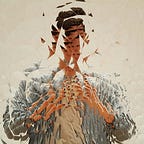Akira (1988): A Peerless Feat of Animation and Cyberpunk Style
Over thirty five years ago Katsuhiro Otomo penned and illustrated a magnificent piece of futuristic fiction. This work, innovative in its concept and oozing aesthetic mastery from every pore took not just Japan but the United States by storm. Akira. A name laden with grandeur and mystery throughout the manga’s world garnered enough acclaim to warrent a high budget film adaptation. This movie would be one of the first major anime releases to ever appear on screen in America, and would change not only its niche medium but would inspire and influence cinema as a whole for years to come.
Primal choir wails and pounding drums introduce us to Neo-Tokyo. The blinding neon lights and crowds of brash streetpunks and gangsters open the door to the seediest sci-fi to ever flicker on to the silver screen. Along with perhaps “Blade Runner” (https://en.m.wikipedia.org/wiki/), “Akira” stands as one of the cinematic progenitors of cyberpunk, and has arguably never been surpassed since in terms of sheer atmosphere and setting. As is common in a cyberpunk city the streets are rife with crime, with schoolboys taking to the streets on motorcycles to wreak havok on their lawless city. Kaneda and his capsule gang are no different, entroducing themselves with a brutal assault on a rival gang.
And behind all the pulsing lights and aestheticly rich landscapes the gang becomes embroiled in strange and unique story deserving of the rich scenery. Kaneda’s young friend Tetsuo finds himself the first to be thrust in to the unknown as he crashes his bike in to a wandering psychic child. Carted away by the government for testing in the wake of the accident, Tetsuo soon discovers that the child has awakened his own well of psychic abilities. Jumping back and forth between Tetsuo and Kaneda (who becomes embroiled in a terrorist plot to disassemble the government holding his friend) the story becomes a sprawling epic across the towers of Neo-Tokyo. Themes of brotherhood, anti establishment, and the power within yourself run throughout as these two boys, nearly brothers, clash.
As the film progresses the story seems to become less and less traditional. Characters abandon their original traits as Kaneda becomes almost an avatar of anarchistic justice and Tetsuo is consimed by pettiness and evil. As the characters evolve and the confrontation in the 2020 Olympic stadium begins the animation truely shines. From here the story becomes far more abstract but is held together with sheer visual prowess. A feat nearly impossible in any other medium is able to overpower the finale’s silent ramblings on evolution and the meaning of the human species by showing us the evolution first hand. The gloppy and pouring amorphous mass once called Tetsuo becomes the visual pinnical of “Akira” and therefor a feat of artistic showmanship challenged only by the greater Ghibli films and “Redline” (https://en.m.wikipedia.org/wiki/Redline_(2009_film)).
A cinematic masterwork. Not just in story and script but in world building and animation as well. One of the progenitors of cyberpunk and the sole reason anime has any hold in the west, “Akira” holds more sway in these niches than any other film before or since. Whether you enjoy or despise the “2001-esque” narrative collapse near the finale, then animation alone helps compensate for most narrative shortcomings.
9/10
